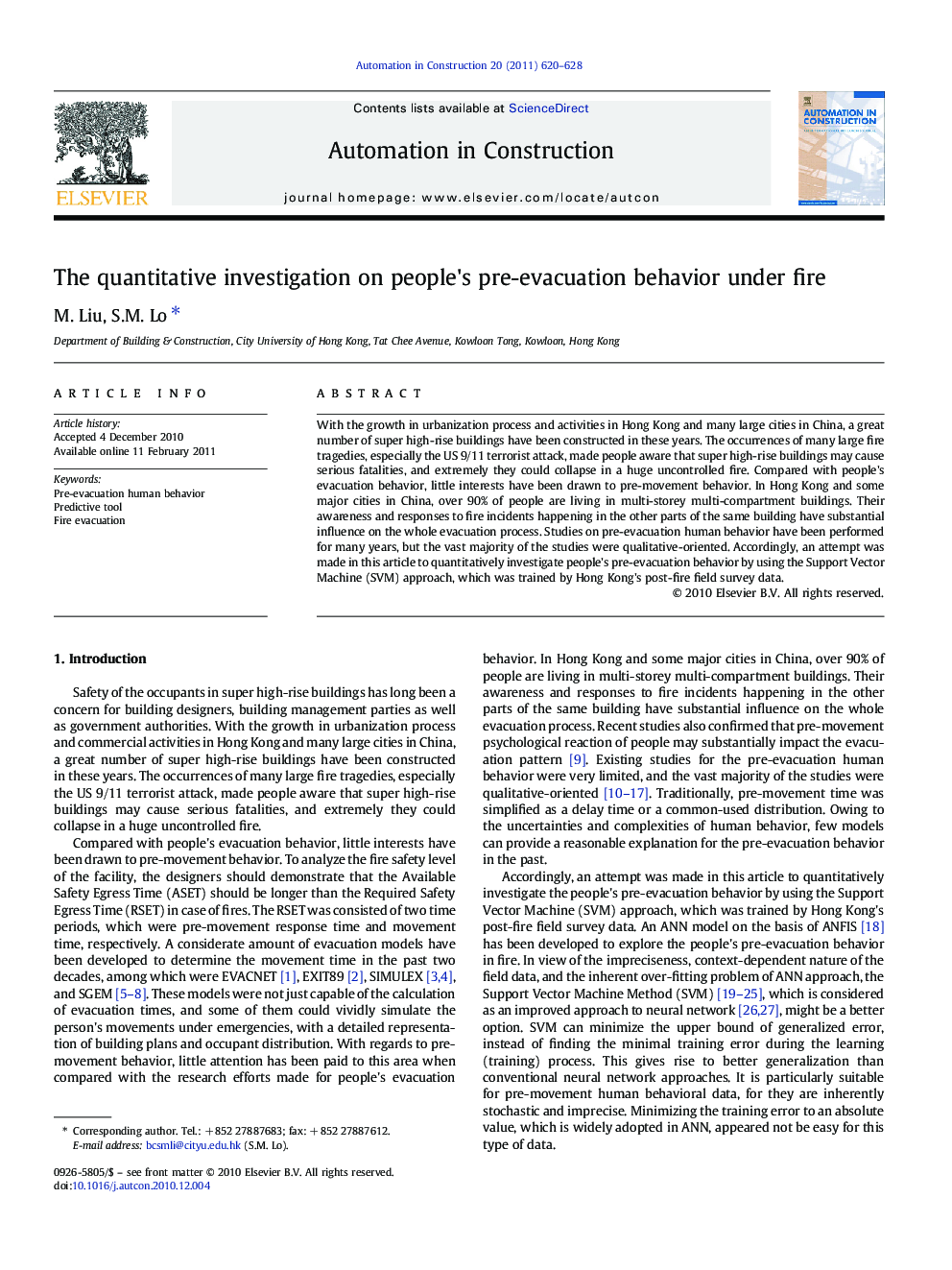| کد مقاله | کد نشریه | سال انتشار | مقاله انگلیسی | نسخه تمام متن |
|---|---|---|---|---|
| 247137 | 502406 | 2011 | 9 صفحه PDF | دانلود رایگان |

With the growth in urbanization process and activities in Hong Kong and many large cities in China, a great number of super high-rise buildings have been constructed in these years. The occurrences of many large fire tragedies, especially the US 9/11 terrorist attack, made people aware that super high-rise buildings may cause serious fatalities, and extremely they could collapse in a huge uncontrolled fire. Compared with people's evacuation behavior, little interests have been drawn to pre-movement behavior. In Hong Kong and some major cities in China, over 90% of people are living in multi-storey multi-compartment buildings. Their awareness and responses to fire incidents happening in the other parts of the same building have substantial influence on the whole evacuation process. Studies on pre-evacuation human behavior have been performed for many years, but the vast majority of the studies were qualitative-oriented. Accordingly, an attempt was made in this article to quantitatively investigate people's pre-evacuation behavior by using the Support Vector Machine (SVM) approach, which was trained by Hong Kong's post-fire field survey data.
Research Highlights
► Quantitatively investigated people’s pre-evacuation responses by the SVM approach.
► A classification model was built and trained by Hong Kong’s post-fire survey data.
► Statistical analysis of post-fire surveys were briefly reported.
► The trained SVM was applied to predict human reactions by artificial generated data.
► The work could be served as a numerical tool for building designers and officials.
Journal: Automation in Construction - Volume 20, Issue 5, August 2011, Pages 620–628